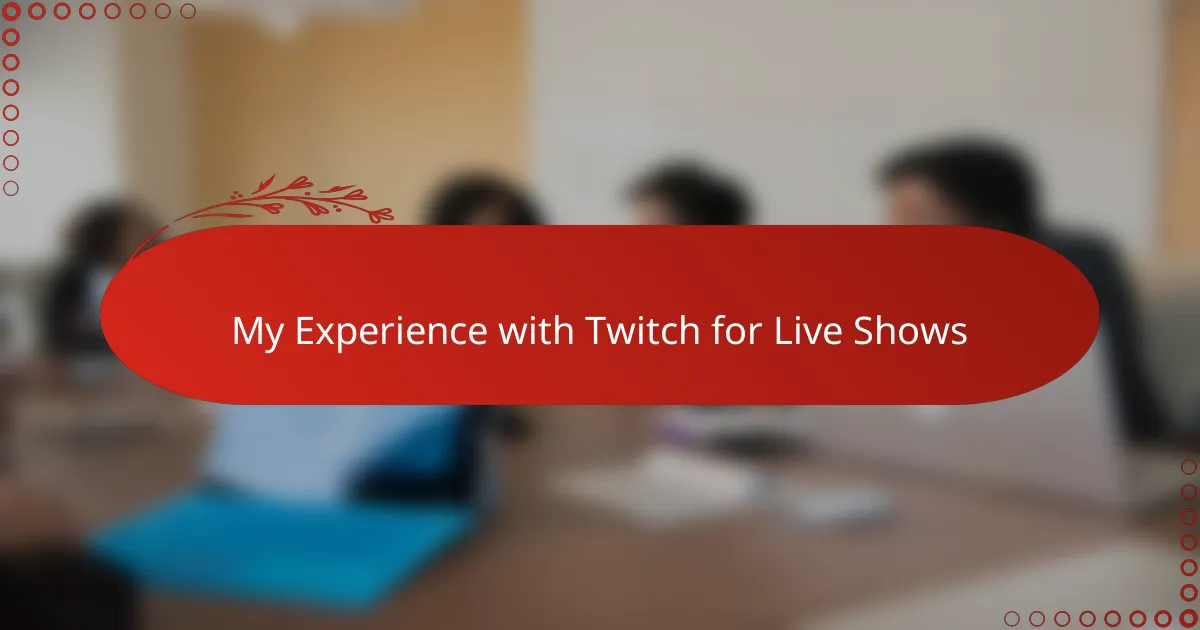Key takeaways
- Twitch offers unique, interactive opportunities for radio broadcasters, enhancing listener engagement through real-time chat and visual elements.
- Investing in quality equipment, such as microphones and webcams, is essential for professional streaming and creating a connection with the audience.
- Establishing a consistent streaming schedule fosters community and regular interaction, making viewers feel more invested in the show.
- Technical challenges during live broadcasts can be managed through preparedness and adaptability, turning potential glitches into opportunities for authentic connection.
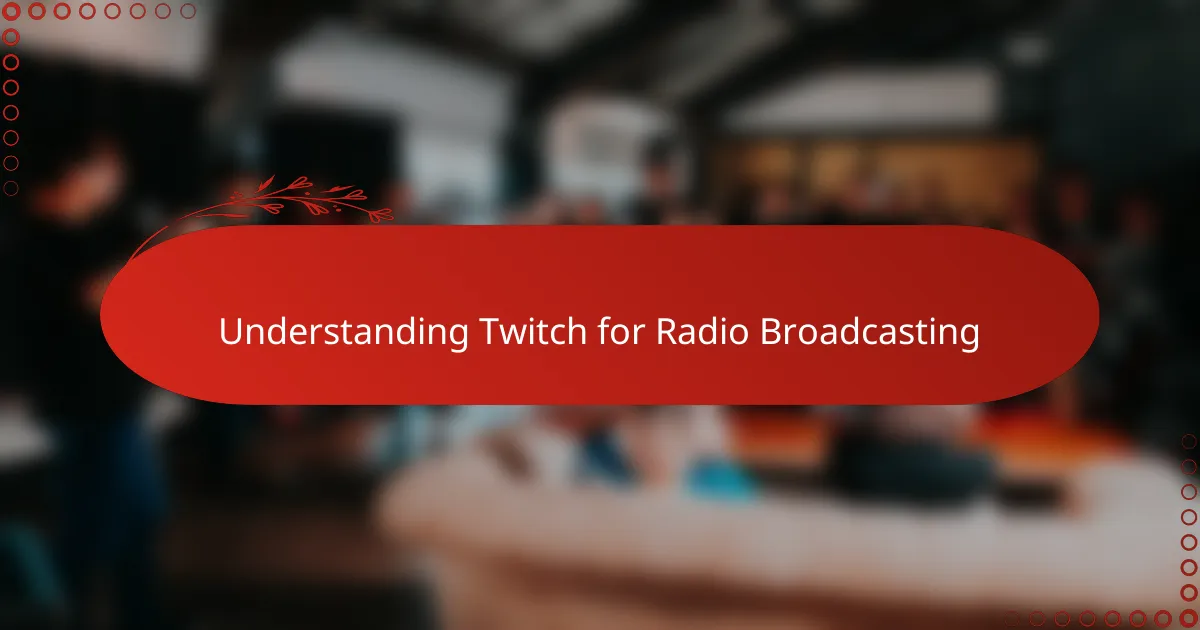
Understanding Twitch for Radio Broadcasting
Twitch initially struck me as a gaming platform, but I quickly realized it offers unique opportunities for radio broadcasters like me. Have you ever wondered how to bring the intimate, spontaneous feel of radio into a live digital space? Twitch’s real-time interaction tools create that exact environment, blending audio and video in a way traditional radio can’t.
When I first started streaming on Twitch, I was surprised by how engaged my audience became. The chat feature allowed listeners to instantly react and ask questions, making my broadcasts feel less like a one-way street and more like a shared experience. It’s as if I was in a cozy studio with listeners beside me, rather than reaching out through static airwaves.
Adapting radio content to Twitch took some trial and error, but the platform’s flexible format gave me the freedom to experiment with visuals and live segments. This has transformed how I think about broadcasting—not just speaking to an audience, but truly connecting with them in real time. Could this be the future of radio? After my experience, I’d say it’s a powerful step forward.
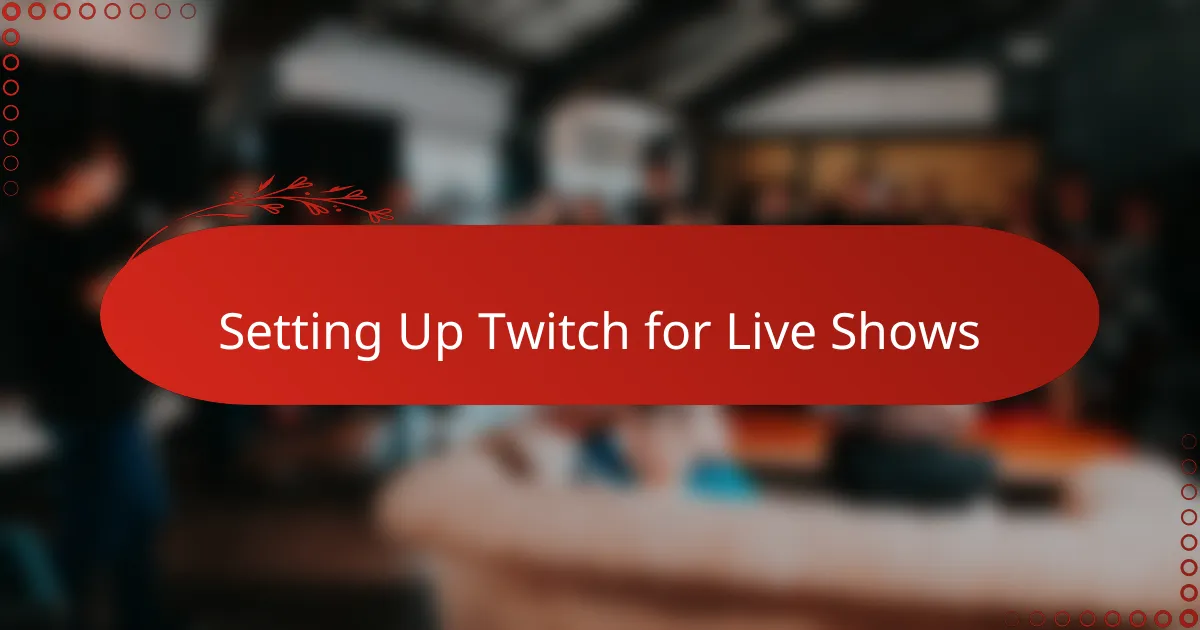
Setting Up Twitch for Live Shows
Setting up Twitch for live shows felt daunting at first—I had to figure out how to balance audio quality with a visual presence. I remember spending hours tweaking my microphone settings and lighting, realizing that even small adjustments made a big difference in how professional the stream appeared.
One thing I learned quickly was the importance of creating a welcoming channel page. I added custom panels with my show schedule and links, so new viewers wouldn’t feel lost. Have you ever clicked on a Twitch stream only to leave because there was no clear info? I made sure that never happened on my channel.
Connecting my broadcasting software to Twitch was surprisingly straightforward, but getting the right bitrate and resolution took some experimentation. I started with standard settings, then adjusted based on viewer feedback and my internet speed. This hands-on approach helped me feel in control and ready for whatever live surprises came my way.
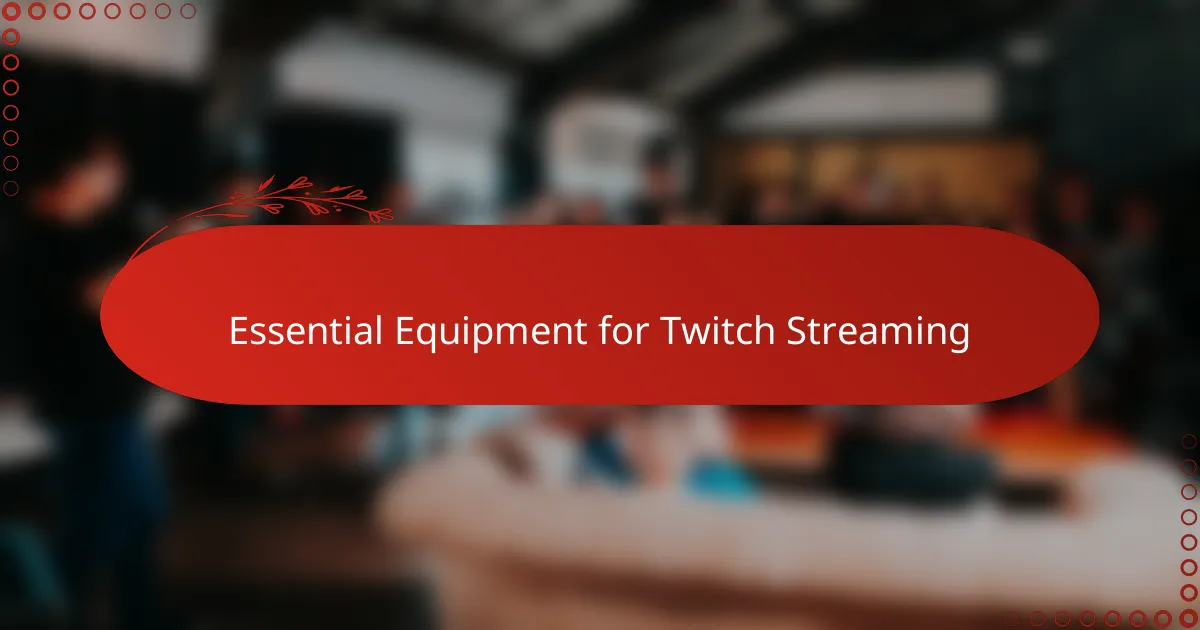
Essential Equipment for Twitch Streaming
When I first dove into Twitch streaming, the very first piece of gear I invested in was a good microphone. Audio quality felt non-negotiable to me—I didn’t want my listeners to strain or click away because of poor sound. It made me realize how much clear, crisp audio elevates the entire experience, especially when you’re used to radio where sound is everything.
Next, I found that having a reliable [censured] changed the game. At first, I thought my voice alone would carry the show, but seeing my expressions and gestures helped create a connection that words couldn’t achieve by themselves. Do you know that feeling when a simple smile or a raised eyebrow brings your audience closer? That’s exactly what a decent camera does for live shows on Twitch.
Lastly, I can’t stress enough how important a sturdy streaming setup is—the computer, the software, even proper lighting. I recall one night, mid-broadcast, when my old laptop started lagging and dropped my stream quality. That moment was a wake-up call. Investing in solid hardware wasn’t just about smooth streaming; it was about respecting my audience and showing up professionally every single time.
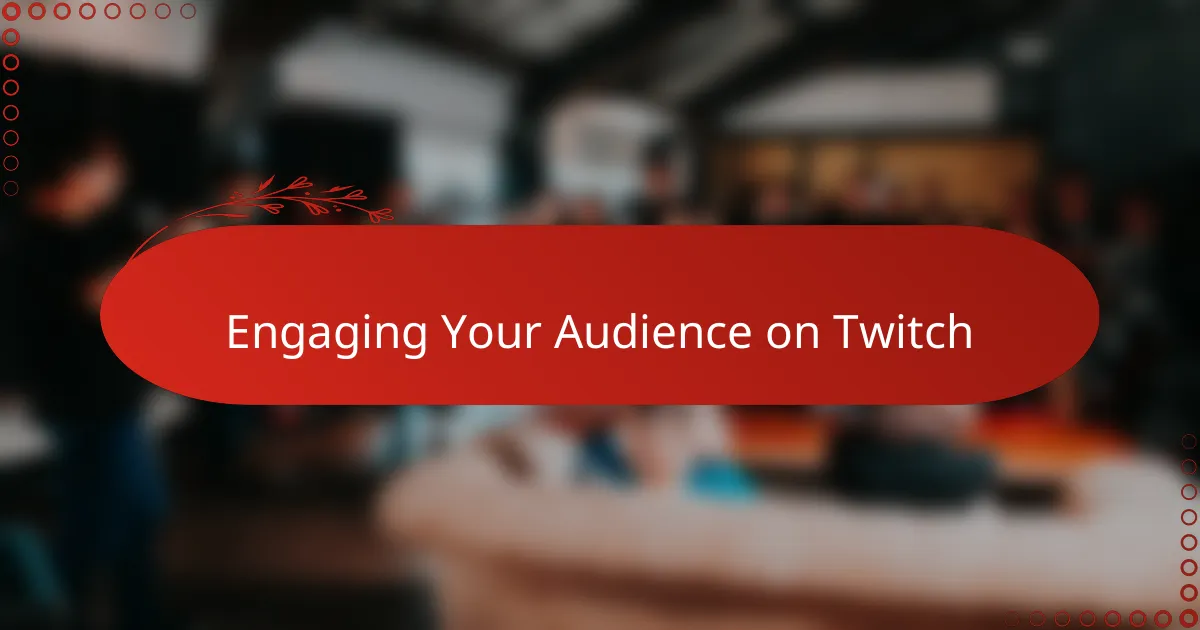
Engaging Your Audience on Twitch
Engaging with viewers on Twitch quickly became the heart of my live shows. I found that responding in real time to chat comments not only kept the momentum going but also turned casual listeners into active participants. Have you ever noticed how acknowledging someone’s question or shout-out makes them feel instantly valued? That small interaction can transform the entire atmosphere.
One trick I learned was to mix up how I invite engagement. Sometimes, I’d throw out open-ended questions or polls, encouraging people to share their opinions or vote on what we’d cover next. This approach created a dynamic feeling, like the audience was co-hosting the show with me rather than just watching. It surprised me how much viewers appreciated having a say—it’s a subtle but powerful way to keep energy high.
I also realized that keeping a consistent streaming schedule helped build a loyal community. When people knew when to expect me live, they showed up ready to chat and connect. That routine became a special thing between us, almost like a weekly ritual. Has a regular meetup ever deepened your bonds with friends? For me, Twitch became just that—a place where my listeners and I could grow together through genuine interaction.
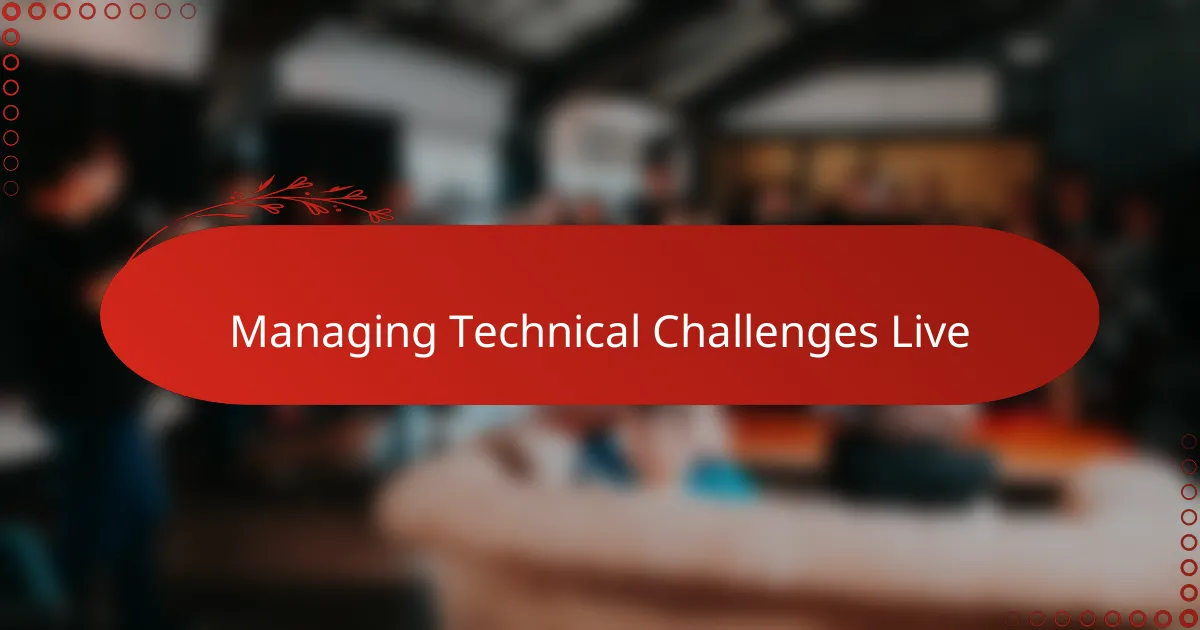
Managing Technical Challenges Live
Nothing tests your nerves like a sudden technical glitch in the middle of a live Twitch show. I once had my audio drop unexpectedly right as I was responding to a viewer’s question—heart-stopping moment, for sure. But staying calm, quickly switching to a backup mic, and keeping the conversation alive with the chat really helped me navigate that hiccup without losing the audience.
Buffering and lag are other challenges that can throw off the flow instantly. I learned to monitor my internet speed constantly and adjust stream settings on the fly. Have you ever had your broadcast freeze right when something exciting was happening? It made me appreciate how important preparedness is, from having multiple connection options to knowing my software inside out.
Dealing with these live technical challenges taught me patience and quick thinking. Instead of getting frustrated, I started viewing issues as opportunities to show my audience behind-the-scenes resilience. That transparency actually built trust—people respected that I didn’t just vanish or panic when things went wrong but handled the moment with honesty and a bit of humor.
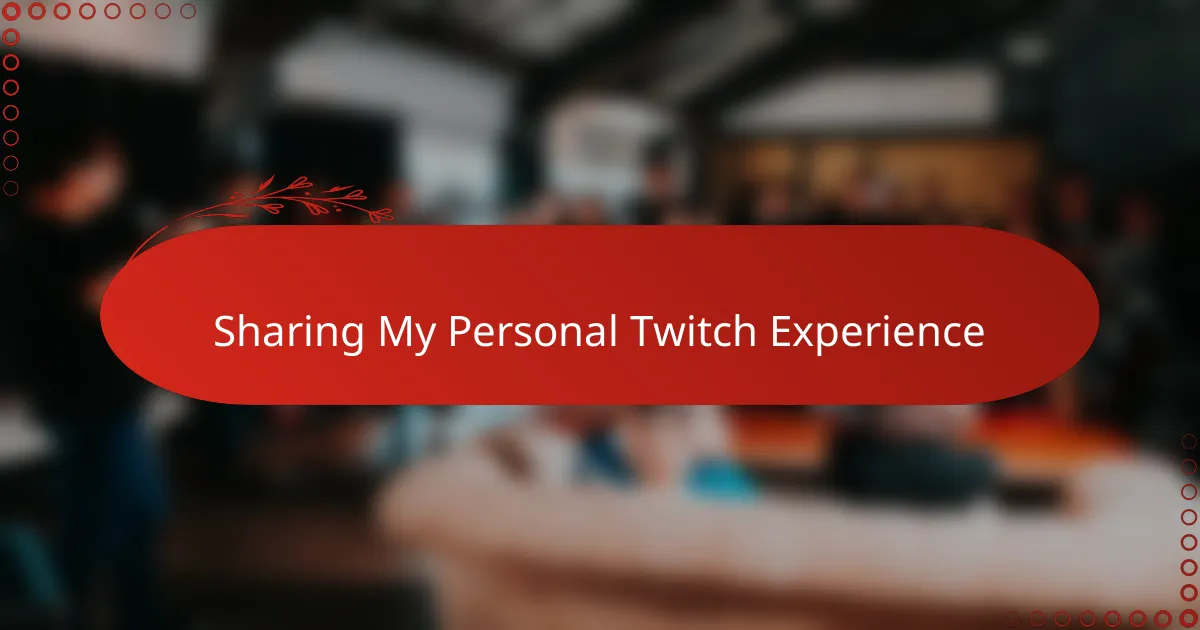
Sharing My Personal Twitch Experience
Sharing my personal Twitch experience has been a journey full of surprises and learning moments. One thing that stood out immediately was how intimate the platform felt—almost like inviting listeners into my studio, even though we were miles apart. Have you ever felt that instant connection with an unseen audience? For me, Twitch bridged the gap between broadcaster and listener in a way traditional radio never quite captured.
I also noticed how much my confidence grew the more I interacted live. At first, responding to chat messages felt a bit intimidating, but it quickly became a highlight. There’s something thrilling about seeing real-time reactions that keeps you on your toes and pushes you to be more authentic and present.
Looking back, the business of juggling live feedback while staying on script was both challenging and rewarding. I recall one broadcast where a viewer’s question completely changed the direction of the show, leading to an unexpected but memorable segment. Moments like that made me appreciate Twitch not just as a tool but as a creative partner in broadcasting.
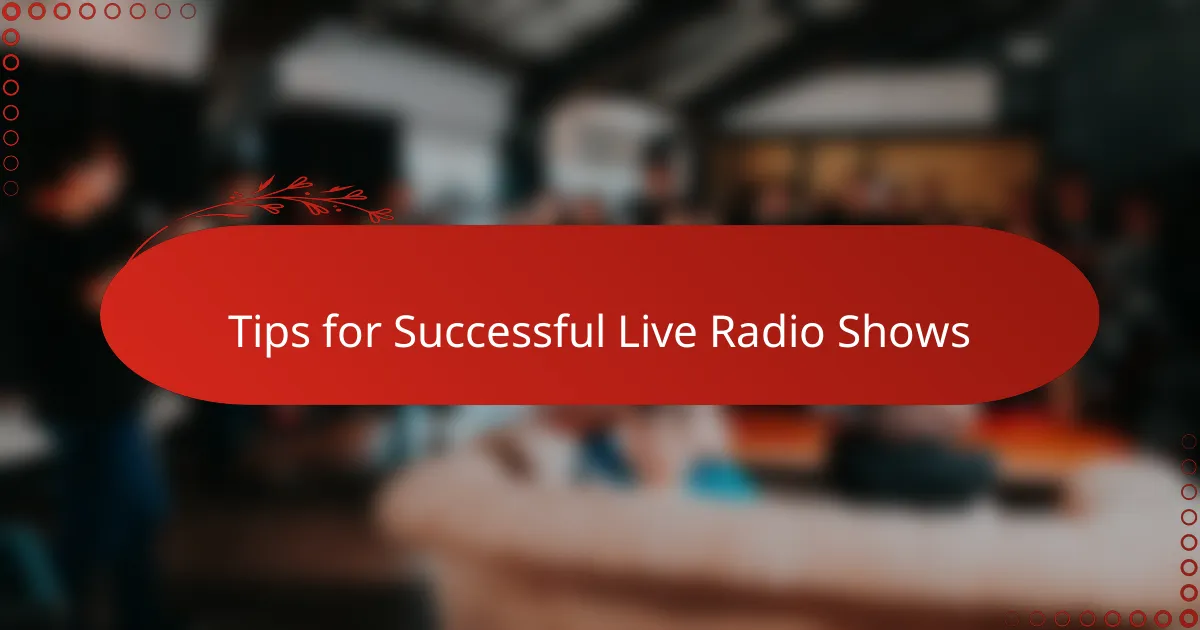
Tips for Successful Live Radio Shows
One tip I find invaluable is to always prepare a clear outline but leave room for spontaneity. Have you ever noticed how the best live shows feel natural, not scripted? I learned that having a structure keeps me on track, but allowing moments to evolve organically makes the broadcast feel authentic and keeps listeners hooked.
Another essential is managing your energy and pacing. Early on, I caught myself talking too fast or losing focus during longer segments. By mixing high-energy moments with quieter, reflective pauses, I created a rhythm that kept me—and my audience—fully engaged throughout the stream. It’s like a conversation, really, not just a monologue.
Lastly, I recommend regularly inviting your audience to participate actively. Whether through polls, shout-outs, or live Q&A, engaging listeners makes them feel part of the show. Have you ever felt more connected to a radio host who remembers your name or follows up on your questions? That connection transforms mere listeners into a community, which is the heart of any successful live radio show.
